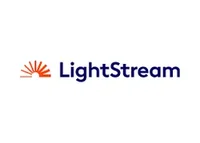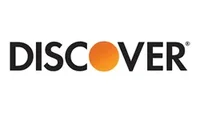How to get a $20,000 loan

Key takeaways
- You can borrow a $20,000 personal loan through most banks, credit unions and online lenders.
- Assess your needs and only borrow what you can afford to repay to avoid damaging your credit and overall financial health.
- Home equity loans, credit cards and HELOCs could be viable alternatives to a personal loan if you struggle to qualify.
You can use a $20,000 personal loan to cover almost any large expense, such as a home improvement project, wedding or medical bill. But before you borrow such a significant amount of money, you should know if it’s the right move for you. Determine what eligibility requirements you need to meet to qualify, where to find a $20,000 loan and how to estimate your total borrowing costs before applying.
How to get a $20,000 personal loan
When you are ready to borrow a personal loan, there are a few basic steps that will keep the application process simple. Since $20,000 loans are offered by many lenders, it will take time to compare options and find the right loan for your finances.
- Check your credit score. Your first step when comparing loans will be to check your credit. This will help you narrow down your options and only apply to lenders that you are confident you can qualify for.
- Determine how much you can spend. You can use a personal loan calculator to estimate your monthly payments and total costs. By doing this, you can start your lender comparison with a good idea of the annual percentage rate (APR) and loan term you can afford.
- Compare lenders. Since there are a variety of banks, credit unions and online lenders that offer $20,000 personal loans, you should spend some time comparing rates. Your credit score and income will be the most important factors when it comes to finding the right lender to fit your needs.
- Apply for prequalification. While there are some notable exceptions, like LightStream, many lenders allow you to prequalify. This lets you check your potential rates without impacting your credit score, making it easier to compare terms.
- Provide documentation. You will need to pull together common documentation that shows you have a sufficient income and can repay the balance of your debt.
- Complete the application. After you have prequalified with a few lenders, compare your options and complete a full application with a hard credit check. Once your application is approved or denied, you should hear back within a few days, but the process may take a week or more, depending on the lender.
Where to get a $20,000 personal loan
| APR range | Loan amount range | Minimum credit score requirement | |
|---|---|---|---|
| LightStream | 6.99%-25.29%* with AutoPay | $5,000–$100,000 | 695 |
| SoFi | 8.99%-29.49%* with Autopay | $5,000–$100,000 | No requirement |
| Discover | 7.99%-25.29% | $2,500–$40,000 | 660 |
| Upgrade | 7.99%-35.99% | $1,000–$50,000 | 580 |

LightStream
-
LightStream is an online lender that offers personal loans for people with excellent credit. It stands out for its high loan limit of $100,000 — so you can get a $20,000 personal loan or more — and its flexible repayment terms. LightStream also offers a no-fee policy and a Rate Beat program to help reduce your interest rate to 0.10 percent below a rate you qualified for with another lender.

SoFi
-
SoFi is another online lender with large loan amounts — up to $100,000. You can apply for and manage your loan completely online. Plus, SoFi has a unique feature that allows you to opt into an origination fee to reduce your overall APR. This provides flexibility to its borrowers by allowing you to choose a one-time fee in exchange for less interest over the life of the loan.

Discover
-
Discover offers borrowers some of the lowest personal loan rates on the market. Like TD Bank and LightStream, Discover also offers borrowers no origination fees on its personal loans. However, it may not work for all borrowers. Discover’s shortest repayment term is 36 months, and it requires borrowers to have an annual income of at least $25,000.

Upgrade
-
Upgrade is another online lender that offers same-day approval and next-day funding for eligible borrowers. Upgrade has more flexible eligibility requirements — including a low minimum credit score of 580. That said, Upgrade’s maximum APR is higher than many of its competitors, which can leave you paying a significant amount more in interest.
Long-term costs of a $20,000 personal loan
The overall cost of your loan depends on your interest rate and repayment terms. With some lenders, the cost will be higher because of additional fees like origination fees, prepayment penalties and late payment fees. You can use a personal loan calculator to estimate how much you will pay in interest based on your APR and loan terms.
Choosing a lender that has minimal or no fees can lower your costs. You can also reduce your overall cost by choosing the shortest term available. The trade off is that your monthly payments will be higher.
For example, a $20,000 loan with an APR of 8.99 percent and a five-year term will cost more than a $20,000 loan with an APR of 12 percent and a three-year term. A longer term means your monthly payment will be lower, but the amount you pay in interest can be thousands of dollars more expensive.
| Repayment term | APR | Monthly payment | Interest paid | Total cost |
|---|---|---|---|---|
| 3 years | 8.99% | $636 | $2,892.46 | $22,892.46 |
| 5 years | 8.99% | $415 | $4,904.20 | $24,904.20 |
| 3 years | 12% | $664 | $3,914.30 | $23,914.30 |
| 5 years | 12% | $445 | $6,693.34 | $26,693.34 |
Pros and cons of $20,000 loans
Taking out such a large loan is a huge financial decision. If you take on more debt than you can afford to repay, there could be serious financial consequences. That said, a $20,000 loan is useful for covering a wide range of fixed expenses, including home improvements and debt consolidation.

Benefits of a $20,000 loan
- Consolidating high-interest debt: If you have a large amount of credit card or other unsecured debt, a $20,000 debt consolidation loan can help you lower costs — if you qualify for a lower average interest rate.
- Funding home improvements: Depending on the type of home improvements you make, taking out a $20,000 personal loan to cover the costs could help you increase the value of your home.

Drawbacks of a $20,000 loan
- Stretching yourself too thin financially: Before you take out a loan, review your finances to see whether you can afford to repay the loan. If you take on too much debt, you may find it difficult to contribute to essential financial goals like retirement.
- Damaging your credit: If you fail to repay your loan, it could cause major damage to your credit score. As a result, it may be harder for you to qualify for future loans like a mortgage or an auto loan.
Alternatives to $20,000 personal loans
If you can’t get approved for funding and prefer to explore other options, consider these alternatives:
- Home equity loan: A home equity loan is a second mortgage that allows you to convert a portion of your equity into cash. Rates are fixed and competitive, but you risk foreclosure if you fall behind on payments.
- Credit card: With a credit card, you’ll only pay interest on the funds you borrow and fail to repay within the grace period. The minimum monthly payment may be smaller than a personal loan, but remember you’ll likely be in debt longer and repaying more interest over time. The average interest rate of 20.12 percent means more of your payments may end up going toward your interest accruals rather than against the principal loan amount borrowed.
- Home equity line of credit (HELOC): HELOCs work like a credit card. You can access a revolving line of credit for a set period. The downside is that your home is used as collateral, so defaulting means it could be foreclosed.
- Loans from relatives and friends: You may be hard-pressed to find a family or friend who can lend you such a large sum. But if someone close to you is willing to float the amount, be sure to get the agreement in writing. Only commit to terms you can uphold to preserve your relationships.
Bottom line
Taking out a $20,000 personal loan is a major financial decision. Before starting your search, figure out if you actually need to take out such a large loan. Then, estimate your borrowing costs to see how much you’ll spend over the life of the loan.
If you determine it’s the right move, be sure to compare personal loan rates and terms from multiple lenders to get the best deal.
You may also like

$15,000 personal loans: Everything you need to know

How to get a $30,000 personal loan

How to get a $100,000 personal loan

How to get a $50,000 personal loan: Check out these lenders



